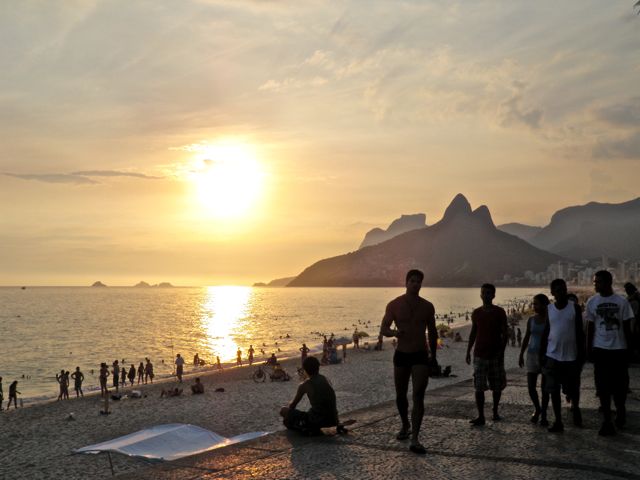Extreme Rio!
Beating Sun, Heavy Rain, and Gargantuan Fruit Leave Little Room for Measure

After three weeks in Rio, I have become, more than anything, accustomed to extremities.
This is the city of extremes, where late and hot and big — among a variety of modifiers — serve not as careful characterizations but as extreme descriptions.
Take last night for example. I was meant to meet a friend at 6:30 p.m. We were meant to get to Copacabana, the neighborhood where we would congregate with more people, at 7:00. We were meant to leave for a party at 9:00. And we were meant to leave said party by 1:00 a.m., in order to be on campus at 7:00 this morning.
Push this all back at least an hour and a half, and the progression of events is normal. That is, extremely delayed. (Welcome to Rio time.)
And this is all before factoring in the variables. Around 7:00 p.m., it started to rain. And I’m not talking your Santa Barbara mist punctuated by rounds of splatter. I’m talking extreme rain. Think golf ball-sized globs of moisture dropping freely, in dense sheets — at intervals of milliseconds — to the ground. All night. Picture a street going from dry to flooded in a matter of seconds.
By the time I locked the door behind me I might as well have dived into the sea. And by the time I trudged out onto the street, I was ankle-plus deep in water. By the time I got to the raised sidewalk, it was flooded too. And every time a car went by a 3- or 4-inch wave of muddy, trash-speckled water would charge over the sidewalk, splash into the building sides, and bounce back again, creating a veritable yacht-in-canal effect.
This was all made more ridiculous by the fact that 10 minutes earlier, the sun was at its normal, extremely powerful state. Whereas on trips to Mexico, the Caribbean, or any location of equivalent vacationing relevance, the casual observer here can pick the tourists from the locals by the amount of post-sunburn peel on the nose and shoulders; even the darkest Cariocas are likely to experience the same phenomenon.
The sun may as well be an intense UV spotlight, focused specifically on Brazil’s own southward-facing seaside sprawl.
And then there’s extreme fruit. It is proportioned according to the Amazon, which, of course, is extremely enormous. Extreme fruit has its origins on the branches of extremely tall, thick trees, which thrive in the extreme intervals of extreme sun and extreme rain. The incredible variety and abundance of luscious fruits make for extremely cheap, delectable fruit juices.
All this fuels the extreme lifestyle of the Carioca. This and the extremely loud music that seems to seep from every corner, the extremely crowded beaches that somehow always have room for just a few more extremely tan people in tiny thong bikinis and Speedos, and the extremely strong caipirinhas.
Rio’s extremities make for ever-exciting happenings and a life that is anything but insipid. Life after Rio, I imagine, might be dreadfully commonplace.



